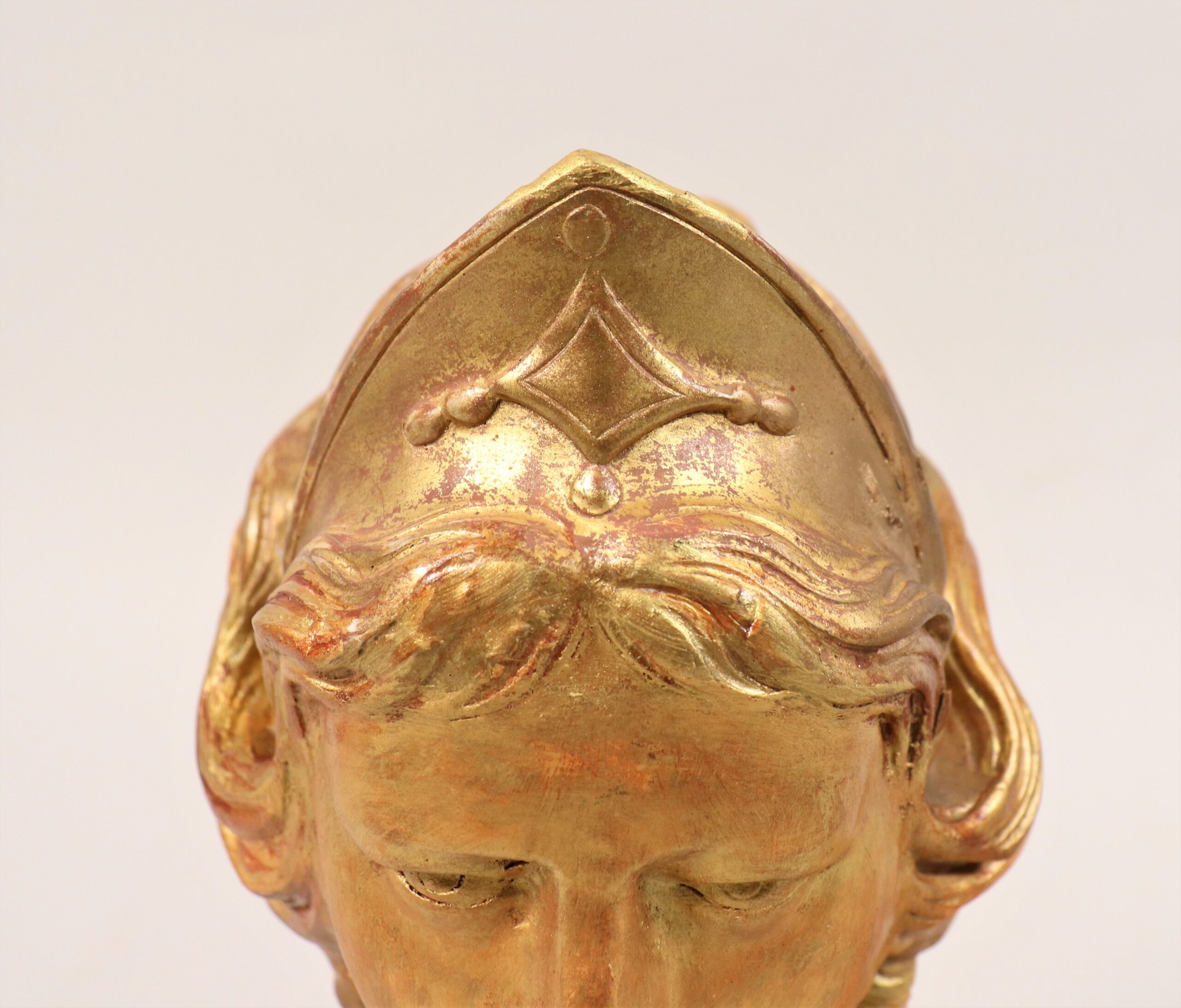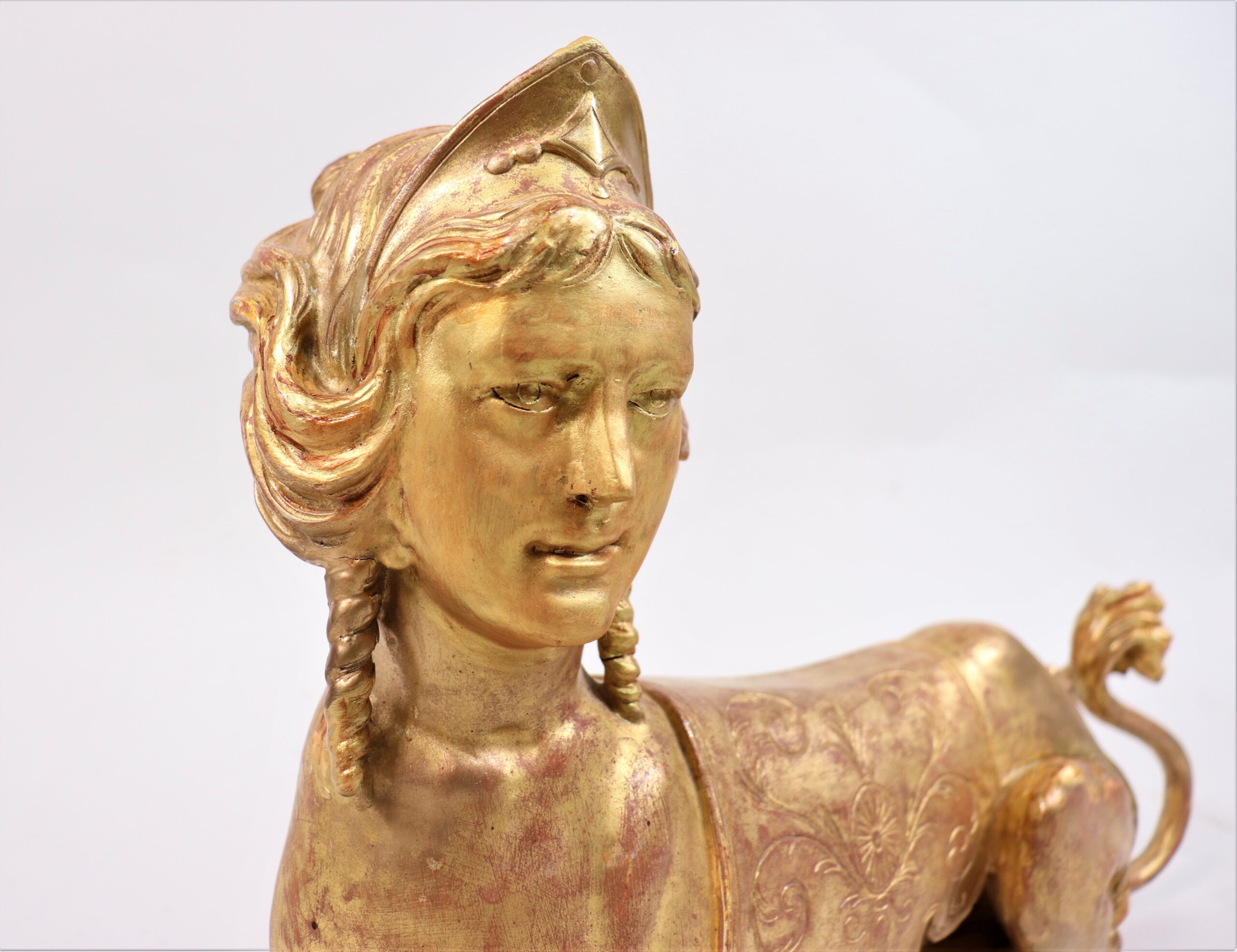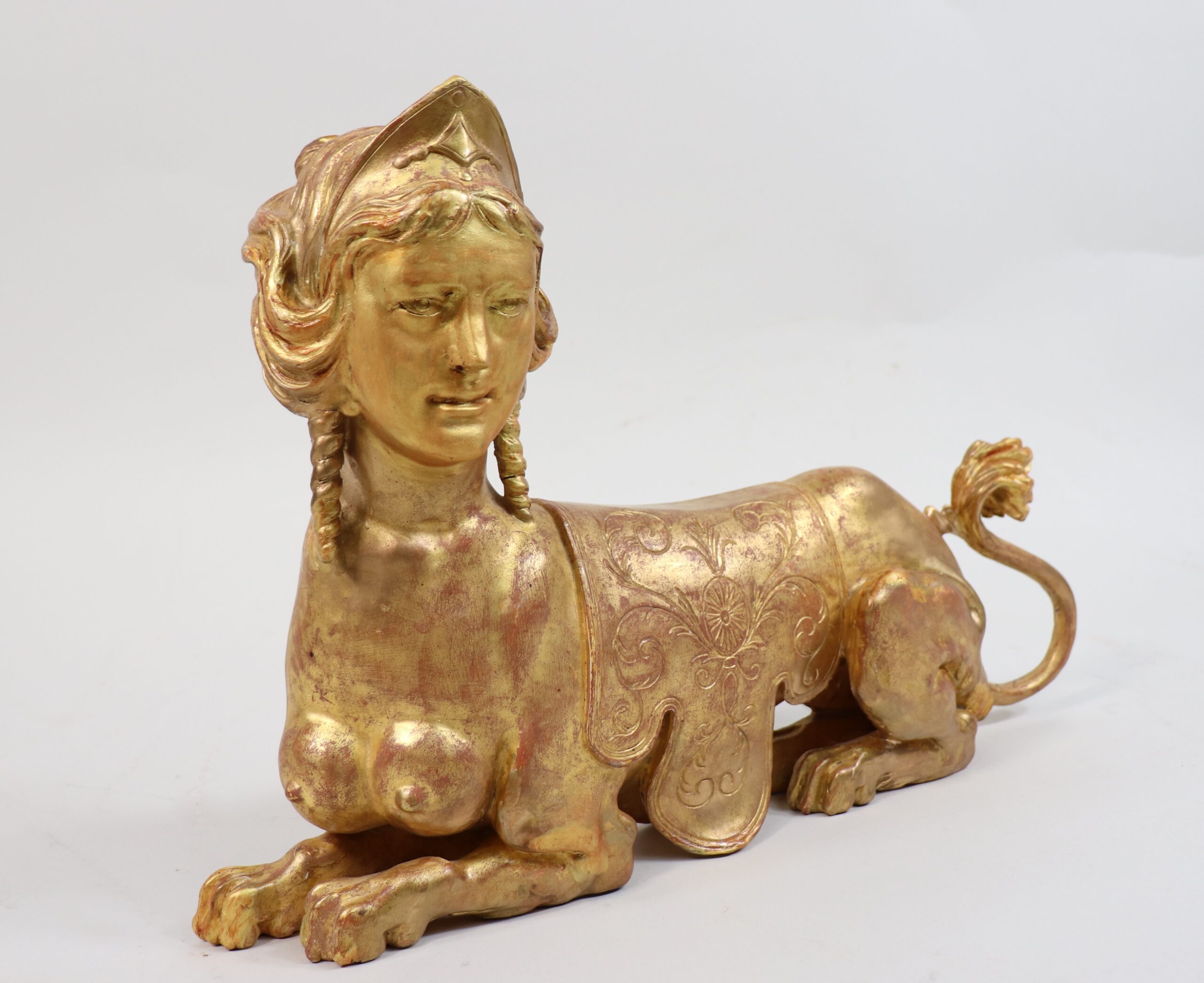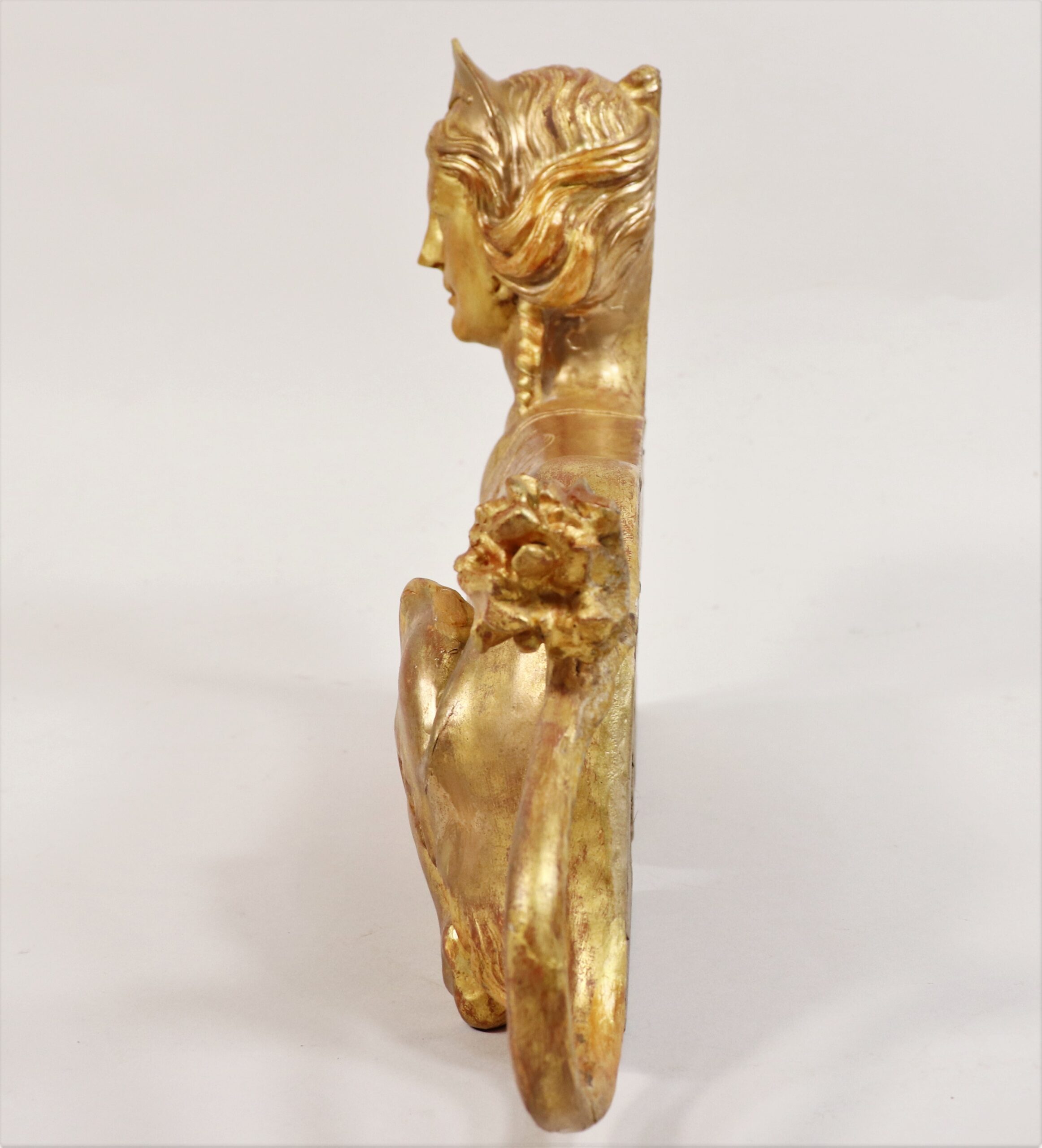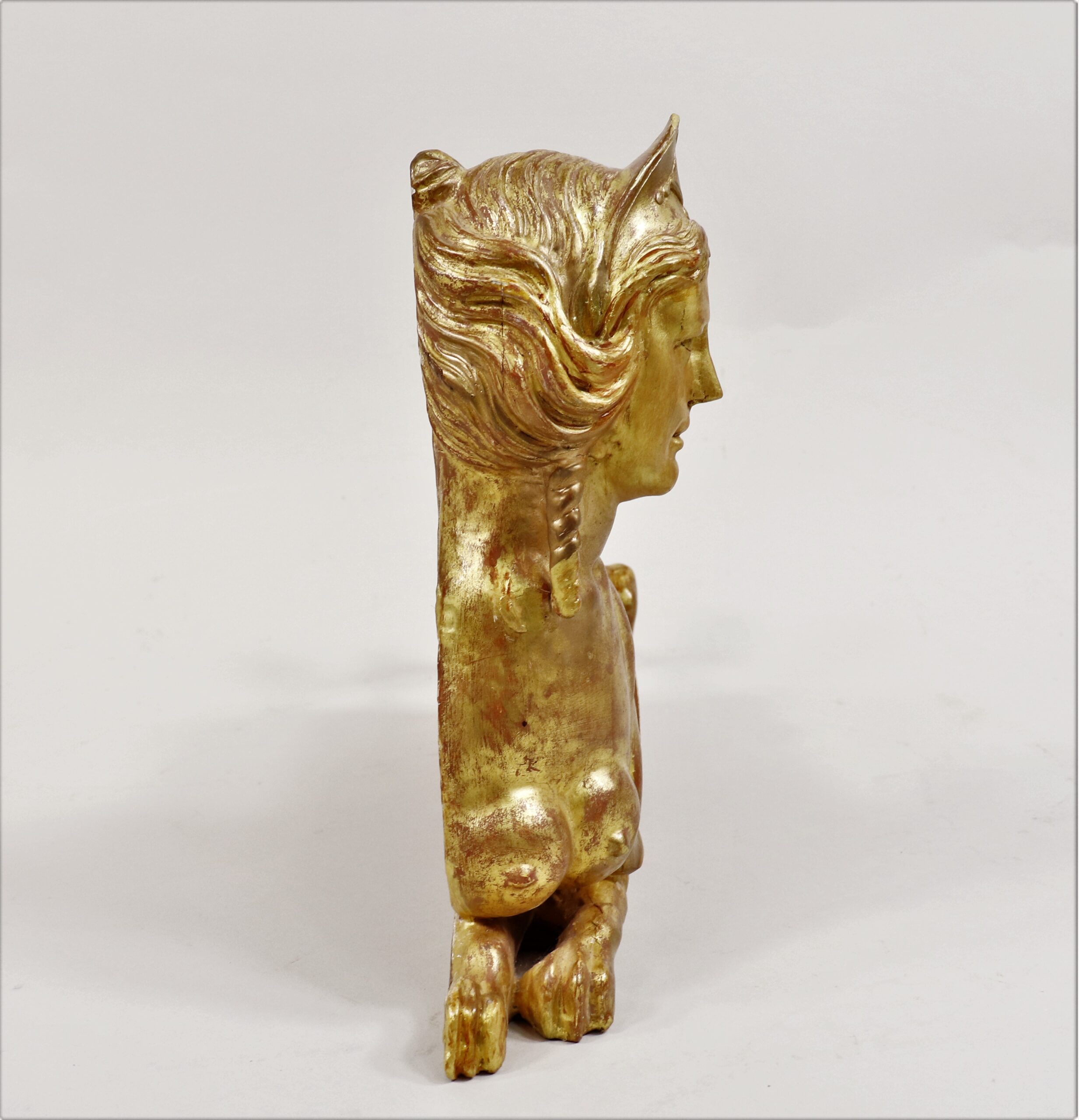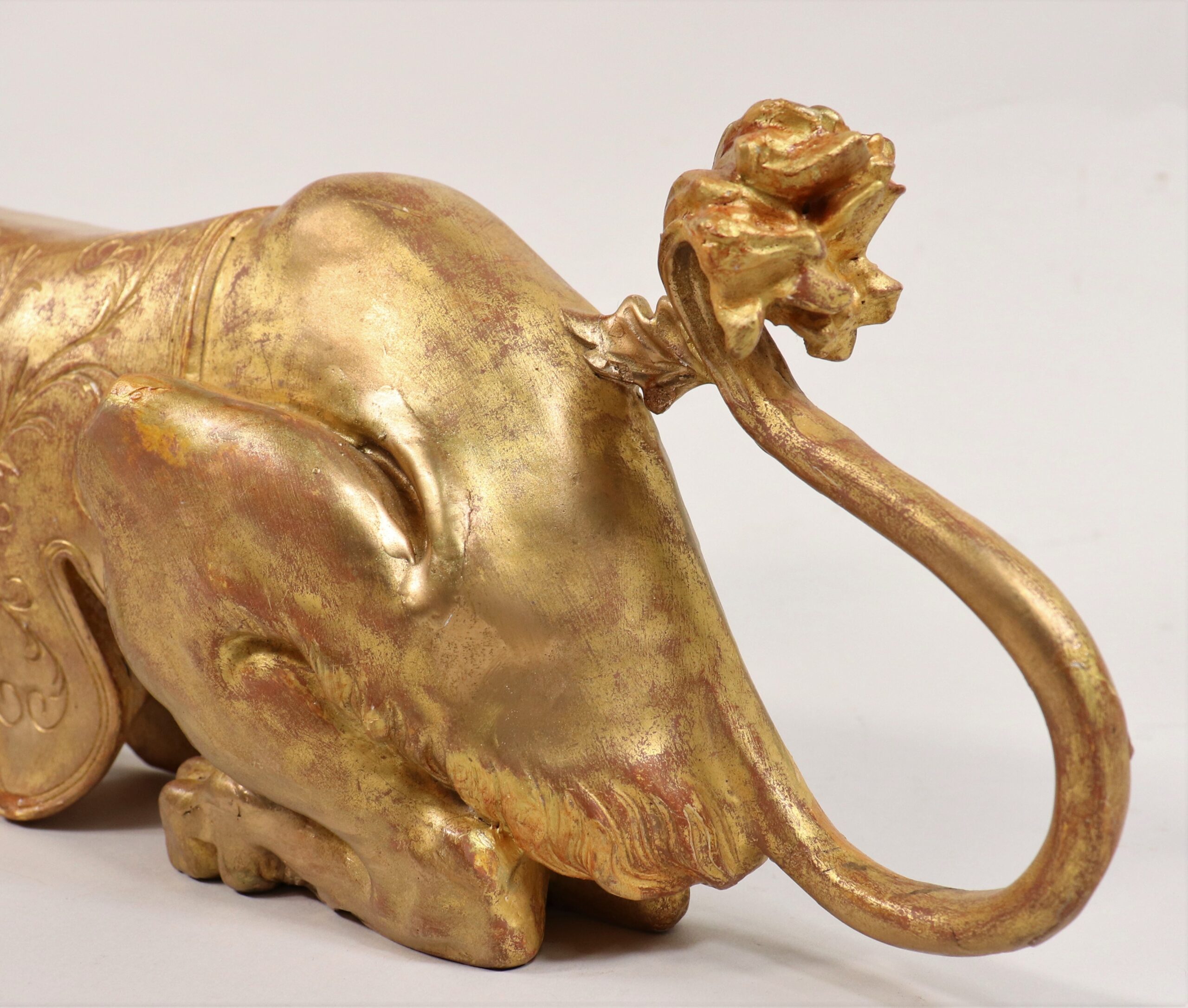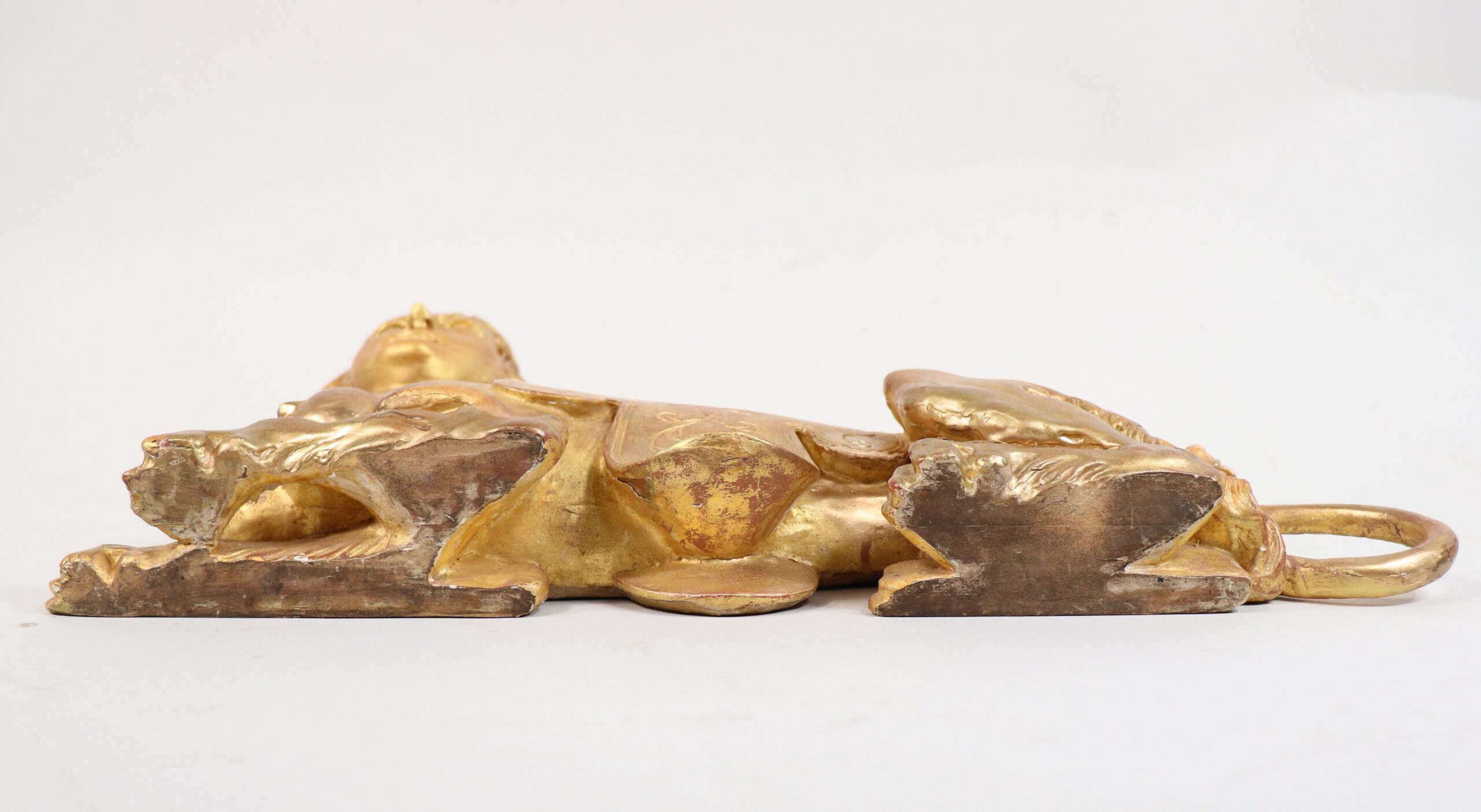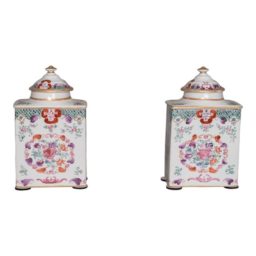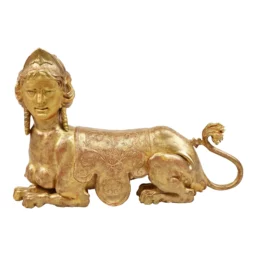Description
From the 1700s through the early 1800s, European aristocrats developed a fascination with ancient Egyptian culture and design that culminated in a full Egyptian Revival. Prominent figures such as Marie Antoinette and Napoleon Bonaparte commissioned rooms decorated with Egyptian motifs. This cultural moment reflects a fascination with a sophisticated civilization of great artists and pharaohs. The Regency era possessed very little knowledge of the Great Pyramids or hieroglyphics, a quality that lent Egyptian art interpretation a compelling air of mystique.
This English Regency period gilt carving depicts a popular figure of borrowed Egyptian motif: the Sphinx. Recognized among educated circles as a symbol of brilliance in the ancient past, the Sphinx was well-known as a mythological creature who destroys those who failed to answer her riddle. Such a piece as this, excellent in detail and craftsmanship, may have once graced the mantle of a gentleman’s study or been exchanged as a gift between British scholars. The beautiful gold surface has been achieved by an artful combination of gilt and gesso; the art enthusiast will appreciate the intricate texture realized in the carving’s hair and tail as well as the delicate detailing of the saddle.
Borrowing from the Egyptians, the Greeks had their own interpretation of the Sphinx. Greek mythology chronicled the Sphinx as being the daughter of Orthous and Chimera or Laius and attributed the riddles, which she proposed, as having been taught to her by the Muses. Crowned with a Grecian diadem and having a refined expression, she evokes an ancient yet reserved intellect.
For the modern-day enthusiast of classical Greek art or mythology, this Regency-era carving would make a compelling addition to an office or living room mantle.
H= 13 in. W= 18.5 in. D= 4.5 in. 5 lbs.



